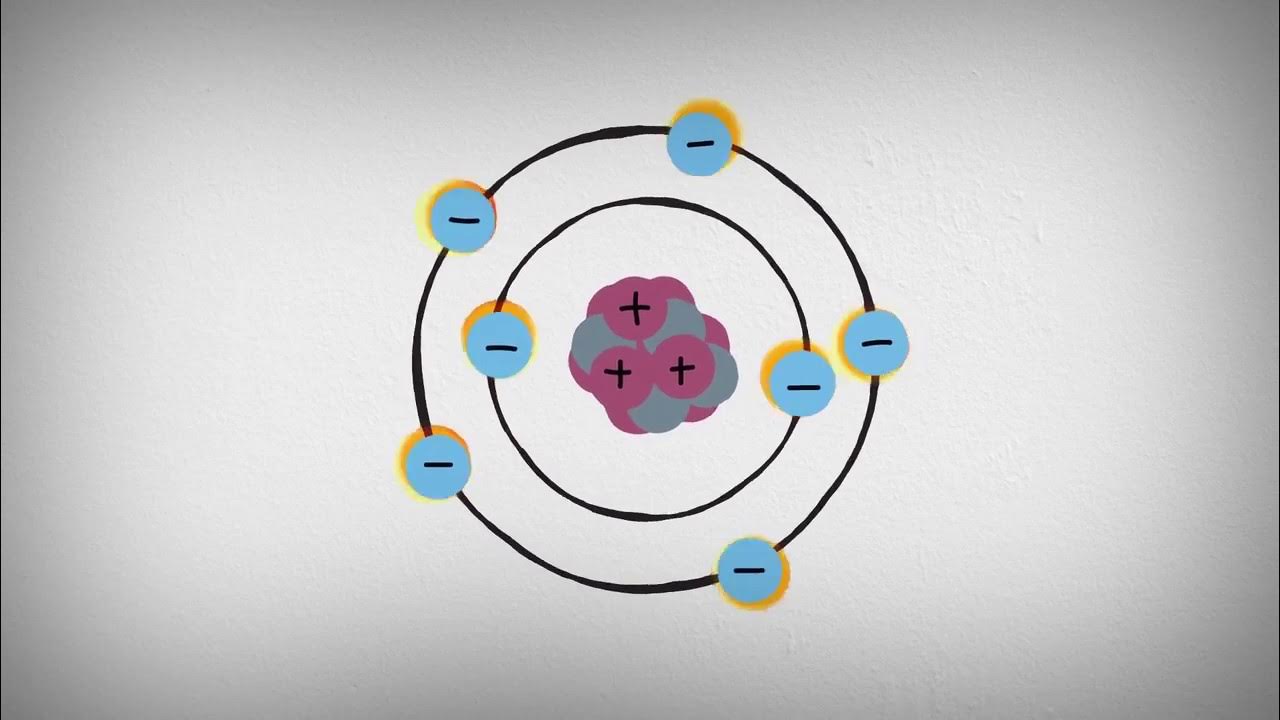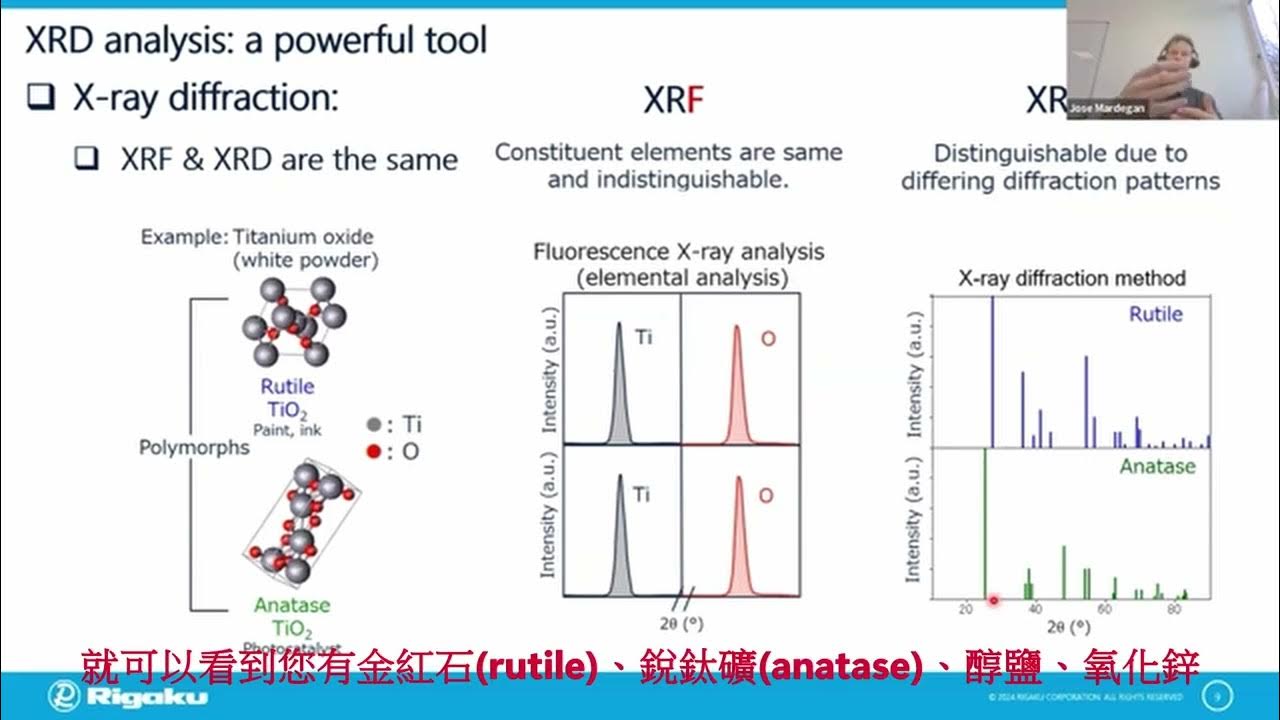X-Ray Diffraction (XRD) Basic Operation
Summary
TLDRThis video demonstrates the operation of a one-dimensional X-ray diffraction (XRD) system using a Buer D8 Focus instrument. It covers the process of setting up the machine, including unlocking the doors, adjusting the sample, and setting parameters for the scan. The XRD is used to analyze material structures, providing valuable data on crystal symmetry, lattice parameters, and other properties like residual stress and crystal size. The video also explains the steps involved in performing a scan, from configuring the X-ray generator to processing the results, ensuring the equipment’s longevity and proper usage.
Takeaways
- 😀 X-ray diffraction (XRD) is a common characterization tool used by material scientists to determine the crystal structure, lattice parameters, and other material properties.
- 😀 XRD helps determine residual stress, crystal size, and oriented growth in materials through the analysis of diffraction patterns.
- 😀 The video demonstrates the operation of a one-dimensional XRD setup using a Buer D8 Focus instrument.
- 😀 Before operating the instrument, users should check the operational lights: 'Ready' and 'On' should be illuminated, while 'Alarm' and 'Busy' should be off.
- 😀 To unlock the instrument doors, users must press the 'Open Door' button and then pull the black handles to open them.
- 😀 X-rays are generated by accelerating electrons onto a copper target, which then diffract when they hit the sample, creating a diffraction pattern detected by a one-dimensional detector.
- 😀 The Divergent slit, Anti-scatter slit, and diffraction slit all play a role in controlling the resolution of the instrument and minimizing noise from scattered x-rays.
- 😀 The sample holder must ensure that the sample's surface is flush with the holder's top surface for accurate readings.
- 😀 The sample stage is adjustable to ensure the correct height of the sample during measurements, and the holder must be locked in place before closing the doors.
- 😀 The user sets up the scan using the XRD software by adjusting parameters like 2-theta scan range, step size, and X-ray generator power before initiating the scan.
- 😀 The X-ray generator's power must be gradually ramped up in increments, ensuring the longevity of the generator. The current is also increased in intervals during setup.
- 😀 Once the scan starts, the X-ray generator shutter opens, and the goniometer begins its motion to capture the diffraction data. The scan completion is indicated by the 'Busy' light turning off.
Q & A
What is X-ray diffraction (XRD) and how is it used in material science?
-X-ray diffraction (XRD) is a technique used to determine the structure of materials by analyzing the diffraction pattern produced when X-rays interact with a crystalline material. It helps in identifying crystal symmetry, lattice parameters, residual stress, crystal size, and oriented growth, making it a common tool in material science for characterizing materials.
What is the purpose of the anti-scatter slit in XRD instruments?
-The anti-scatter slit in XRD instruments helps reduce noise caused by scattered X-rays, particularly from amorphous material or air. It ensures that the diffraction pattern is more accurate by minimizing interference from unwanted X-ray scatter.
Why is the sample holder's surface important in XRD?
-The sample holder's surface needs to be flush with the top surface of the sample holder to ensure that the sample is properly positioned for accurate diffraction measurements. This alignment ensures the X-ray beam interacts uniformly with the sample.
How does the X-ray generator work in an XRD instrument?
-In an XRD instrument, the X-ray generator works by accelerating electrons toward a copper target. The interaction between the electrons and the target produces X-rays, which are directed toward the sample for diffraction analysis.
What is the role of the nickel foil in XRD?
-The nickel foil in XRD instruments serves to absorb higher energy K-beta X-rays while allowing K-alpha X-rays to pass through. This selective absorption helps refine the diffraction data by reducing noise from unwanted X-ray energies.
What factors can be adjusted when setting up an XRD scan?
-When setting up an XRD scan, factors that can be adjusted include the 2-theta scan range, step size or number of steps per scan, and the time per step. Additionally, the X-ray generator power (voltage and current) can be adjusted to optimize the scan.
What is the significance of ramping up the X-ray generator power gradually?
-Ramping up the X-ray generator power gradually in 5 kV increments for voltage and 5 milliamp intervals for current ensures the longevity of the generator. This gradual increase prevents sudden stress on the system, contributing to its overall durability.
How do the goniometer and sample stage function during an XRD scan?
-The goniometer in the XRD instrument moves the sample and detector through various angles, while the X-ray generator remains stationary. The sample stage holds the sample in place, and during the scan, the goniometer rotates the sample to collect diffraction data from different angles.
What happens after an XRD scan is completed?
-After an XRD scan is completed, the X-ray generator shutter automatically closes, the busy light turns off, and the scan data is processed. The final position of the goniometer may make it challenging to remove the sample holder, requiring manual adjustments of the goniometer position for easy removal.
What should the user check before leaving the XRD room?
-Before leaving the XRD room, the user should check the status of the alarm light. If the alarm is on, they must contact the lab technician for assistance to ensure the equipment is functioning properly and safely.
Outlines

This section is available to paid users only. Please upgrade to access this part.
Upgrade NowMindmap

This section is available to paid users only. Please upgrade to access this part.
Upgrade NowKeywords

This section is available to paid users only. Please upgrade to access this part.
Upgrade NowHighlights

This section is available to paid users only. Please upgrade to access this part.
Upgrade NowTranscripts

This section is available to paid users only. Please upgrade to access this part.
Upgrade NowBrowse More Related Video

Prinsip Kerja XRD (X-Ray Diffraction) | Hukum Bragg | Bahasa Indonesia

Mineralogi Petrografi - Acara 8 - Pengenalan XRD, XRF, dan SEM

What is X-ray Diffraction?

Webinar 2

UAD - Kuliah Online 1475530 Karakterisasi Material Lanjut (Lecture 1c)

UAD - Kuliah Online 1475530 Karakterisasi Material Lanjut (Lecture 1b)
5.0 / 5 (0 votes)